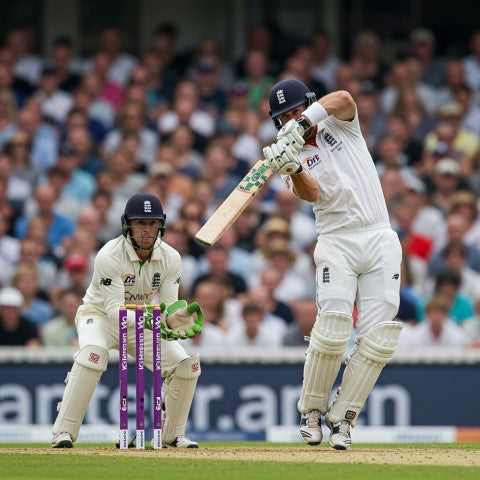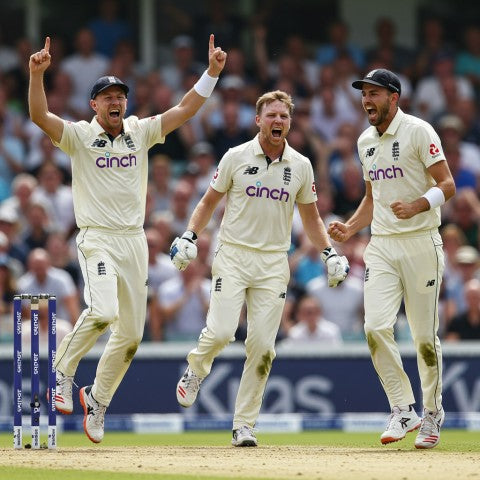Why ODI Is Dying — And Why No One Seems to Care

There was a time when the One Day International (ODI) was cricket’s crown jewel. World Cups were sacred, bilateral series mattered, and Sachin Tendulkar’s 200 against South Africa in 2010 felt like the sport’s version of landing on the moon. But fast forward to today, and something’s gone flat. Crowds are thinning. Players are opting out. Bilateral series arrive with all the excitement of a rain delay. The unspoken truth? ODI cricket is slowly dying — and very few seem to be losing sleep over it.
There’s no official funeral yet. The format still clings on to ICC schedules, major broadcasters, and board politics. But the symptoms are everywhere: broadcasters prioritise T20s, top players rest during ODIs, and some fixtures are practically invisible to fans. Even when an ODI series is technically underway, it often feels like filler content between Tests and T20s.
The conversation around why ODI is dying isn’t just about overs and formats. It’s about attention spans, marketing shifts, cricket board priorities, and the changing definition of entertainment. The game has evolved. Fans have evolved. But ODIs? They're largely stuck in 2005.
In this deep dive, we’ll unpack the slow fade of the 50-over format — and ask the uncomfortable question: is anyone really trying to save it?
T20 Cricket: The Format That Ate Everything
The rise of T20 cricket hasn’t just introduced a new format — it has completely redefined the sport’s ecosystem. From player development to media rights, from crowd expectations to brand engagement, everything now pivots around the shortest format. In this world, the ODI is starting to look bloated and outdated.
T20 matches are compact, marketable, and designed for the modern attention span. A three-hour contest packed with fireworks, music, and guaranteed results. Compare that to a day-long ODI where the middle overs often drift into irrelevance. For the casual fan, the choice is easy.
T20 leagues like the IPL, BBL, and now Major League Cricket have also carved out calendar real estate once dominated by ODIs. Players now prioritise leagues that offer high-intensity matches, global exposure, and — let’s not ignore it — enormous pay cheques. When a format doesn’t offer money, prestige, or buzz, why stick with it?
The proof lies in behaviour. Players are resting during ODIs to stay fresh for T20s. Boards are scheduling fewer bilateral 50-over series. Fans are skipping ODIs altogether — unless a trophy or World Cup hangs in the balance.
This is a major reason why ODI is dying — not because it’s inherently broken, but because something shinier and quicker took its place.
The Vanishing Act on Screens
There’s a quiet disappearance happening — not with a bang, but a flicker. Turn on the TV and try finding an ODI. Unless it’s part of a World Cup or involves two massive teams, the format barely registers on broadcast schedules. Sports networks and streaming platforms are prioritising what audiences are actually watching: T20 leagues, Test series with storylines, or even highlights reels that last longer than the viewers’ patience.
ODI cricket has somehow become the genre nobody clicks on. There’s no trailer, no build-up, no conversation. You’ll see memes about a T20 knock in a franchise game, but a well-paced century in an ODI bilateral? Radio silence. This isn’t just anecdotal — media budgets reflect it. Less airtime. Fewer promos. Shrinking real estate on sports apps.
This silent fade is a key reason why ODI is dying. Not because it’s unwatchable — far from it. But in a digital economy where attention is monetised, ODIs aren’t sparking clicks. It’s not just fans losing interest. The media ecosystem is quietly pushing ODIs to the margins. And when the media stops caring, so do sponsors. So do boards. So, eventually, do players.
The format isn’t being killed off. It’s being ignored into irrelevance.
The Format No One Wants to Prioritise
You can see it in the team sheets. When a bilateral ODI series rolls around, suddenly the star names are “resting”, workload is cited, and someone you’ve barely heard of is captaining. It’s become predictable — and damning.
There was a time when ODIs were where legacies were made. Now it’s where squads are rotated, debuts handed out, and captains field post-match questions they clearly don’t care to answer. If you’re wondering why ODI is dying, look no further than the indifference from within.
Players don’t skip World Cup matches. They don’t rotate for big Tests. But for a midweek ODI in an empty stadium? It's treated like pre-season. Not because they dislike the format — but because it no longer leads anywhere. It’s not central to careers. The incentives have shifted.
If even the teams treat it like background noise, what message does that send to fans?
No Room on the Calendar, No Room in the Conversation
Look at any modern cricket calendar and you’ll see chaos. Test series overlapping with T20 leagues. Bilateral series squeezed between franchise obligations. And ODIs? They’re the first casualty of the scheduling war.
In theory, they’re still part of the ICC’s Future Tours Programme. In practice, they’re the awkward middle child. Boards slot them in because they’re obligated to, not because they want to. They’re often wedged between a high-stakes Test series and a buzzy T20 showdown, doomed to irrelevance before the first ball is bowled.
This is part of why ODI is dying. There’s simply no space left for it to breathe. No time for build-up, no appetite for three separate formats on one tour, no incentive for fans to tune in when there’s already cricket fatigue setting in.
And then there’s the World Cup problem. For a format that’s struggling, you'd think the 50-over World Cup would be its saving grace. But even that’s losing its aura. The tournament feels too long, too bloated. It can’t keep up with the streamlined, seven-week IPL or the punchy T20 World Cup. And once the World Cup is over? A void. No storyline, no momentum, just silence.
The reality is, the 50-over format isn’t just losing airtime — it’s losing its identity.
A Format Without a Brand
T20 cricket has a brand. It’s loud, fast, colourful. Test cricket has one too — it’s old-school, strategic, steeped in history. But what does ODI cricket stand for anymore?
It’s not the quickest. Not the purist’s choice. Not the most glamorous. Not even the most lucrative. It’s stuck in a branding no-man’s land, and that’s proving fatal. People aren’t sure why they’re watching anymore. Players aren’t sure what legacy it builds. Broadcasters aren’t sure how to sell it. If you’re not sure what a format is, how do you justify keeping it?
This loss of identity is another unspoken reason why ODI is dying. It’s not just being outpaced — it’s being forgotten. When a format no longer stands for anything, it becomes optional. And in today’s cricket economy, “optional” is another word for disposable.
Can ODIs Still Be Saved?
The short answer: yes. But it won’t happen by accident.
ODIs still offer something unique — the blend of pacing and pressure that made innings like AB de Villiers’ 31-ball hundred or MS Dhoni’s last-ball finishes iconic. Those moments came because the format allows room to build tension and then release it in style. But right now, there’s no real investment in reviving that magic.
What if the format had proper context again? The ODI Super League was an attempt — flawed, but at least it gave meaning to otherwise forgettable bilaterals. Imagine a version with teeth: promotion, relegation, World Cup qualification on the line. Suddenly, a random India–Sri Lanka series in January matters.
Then there’s the structure of the games themselves. Some ODIs feel like glorified T20 warm-ups. Kane Williamson might anchor, Shai Hope might grind, but if nothing rides on the result, who’s watching? The ICC needs to make fans care again. And part of that is encouraging captains to innovate. Bring in a batting powerplay at any stage. Expand substitute rules. Give Jos Buttler or Rohit Sharma new tactical weapons.
But let’s not kid ourselves — players won’t prioritise a format if boards, broadcasters, and fans don’t. Virat Kohli may love ODIs, but if his most memorable knocks are buried in a midweek series no one watched, what legacy does that build?
ODIs need urgency, investment, and creative risk. Otherwise, they’ll fade behind the firepower of T20s and the gravitas of Tests.
Final Thoughts: Why ODI Is Dying — and Who Loses If It Goes
There’s a slow drift happening — and it’s taking away more than just a format. ODIs helped define modern greats. Think of Sourav Ganguly in ’99, Ponting’s 2003 World Cup final, or Sachin Tendulkar’s desert storm innings. These weren’t warm-up matches. They were career-defining chapters.
So when we talk about why ODI is dying, we’re also asking: where will cricket’s next long-form narrative arcs come from? Can Travis Head’s World Cup final blitz or Ben Stokes’ nerveless 84 in 2019* exist without the platform that ODIs uniquely provide?
Without the 50-over game, we risk turning cricket into an all-or-nothing spectacle — slow marathons or chaotic sprints, nothing in between. And we lose the space where a player like Mohammad Rizwan can anchor, then explode. Where Rassie van der Dussen can show grit. Where you win not just with firepower, but with structure, partnerships, and smarts.
ODIs gave us nuance. They made room for storylines. If they die, we’ll notice — but only after it's too late.
And worse still? We may realise we didn’t fight hard enough to keep them.





Leave a comment